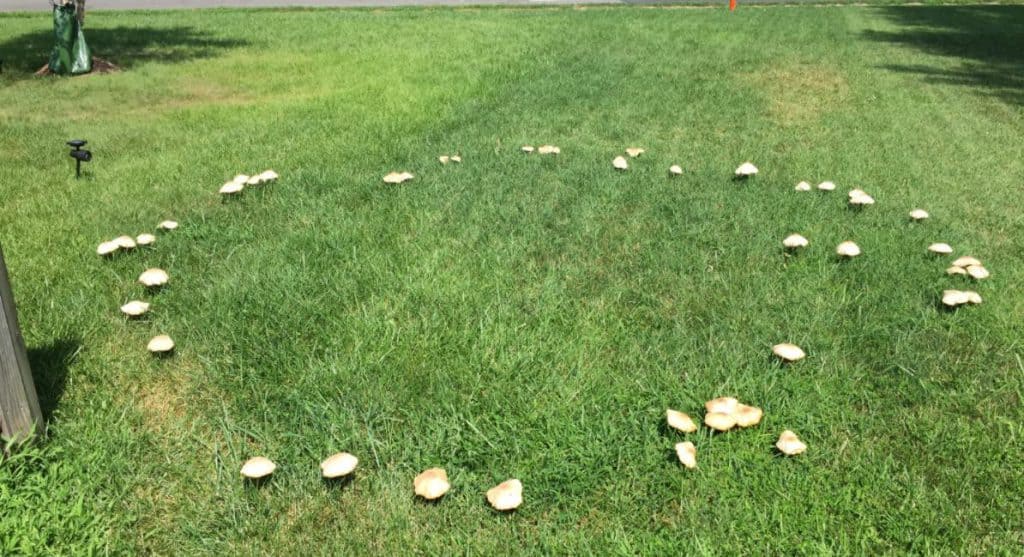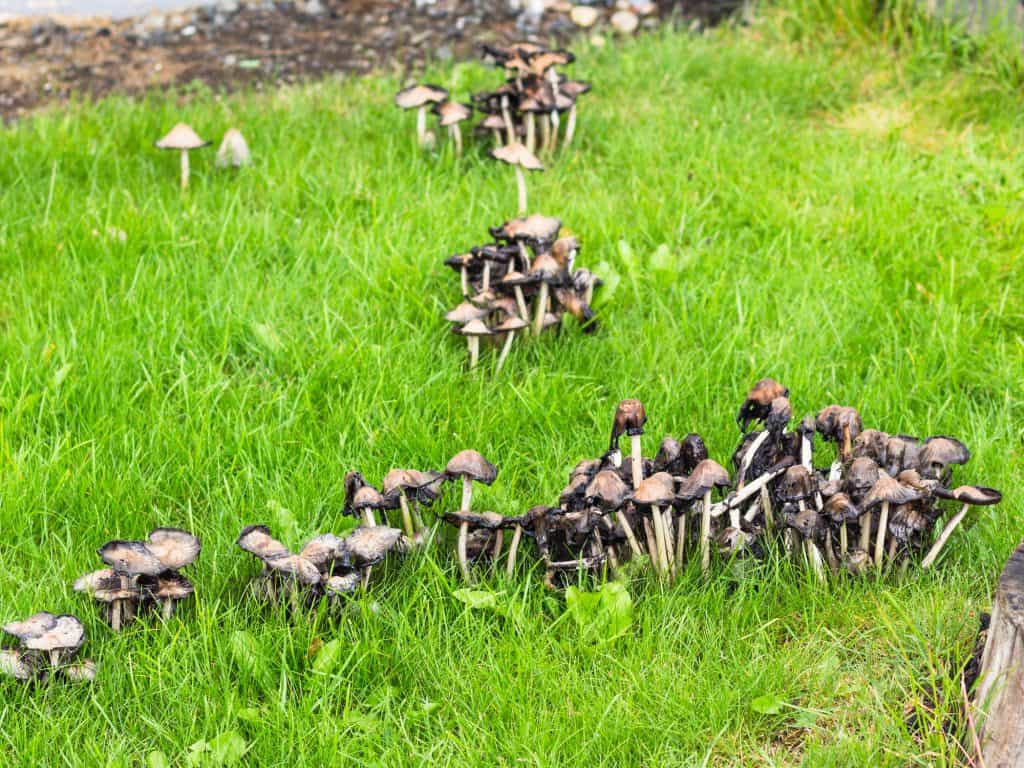You may start seeing a bunch of mushrooms growing in your lawn a day or two into the monsoon season. They may be white or brown and can stay fresh throughout the season. You may also see these mushrooms pop up when you are watering your lawn more, especially during the summers.
While some may enjoy these mushrooms growing in their lawns (they are, after all, temporary), others may want to get rid of them quickly, considering how they might look off in a perfectly green yard. A common questions homeowners often ask are “why is my yard growing mushrooms?” and “are they a good or bad sign and what can I do about them?”
Excess water and temperature extremes in the summer combine to create the perfect mushroom growing conditions. These ‘mushrooms’ are actually the fruit of beneficial fungus in the soil. Seeing mushrooms grow in your lawn means that the fungus has already been established in the soil and is ready to ‘fertilize’ it. However, there are some other intricacies to consider as well.
Why Is My Yard Growing Mushrooms?

As mentioned above, these mushrooms are ‘fruits’ of fungus in the soil produce to spread spores around with the help of wind, animals, or even our footsteps and lawnmowers. Under the perfect conditions, i.e., moist and cool but not too cold, the fungus shoots up its flower that eventually turns into a fruit containing seeds, i.e., the spores.
These mushrooms don’t really hurt your grass, whether it’s a white or a brown mushroom. In fact, these mushrooms actually help promote water storage and circulation in your lawn because of the extensive root system each mushroom (and, in turn, fungi) has. However, if you try to pull out a mushroom with its root, you won’t be successful. This is because the mushroom is a flower with a short life. Giving it an extensive root system makes sense but making it robust doesn’t.
Once the flower dies off, it doesn’t take the associated root systems to die off as well, effectively turning it into compost for your lawn. The roots rot away in just a day or two. The fungi break the roots down along with any other organic material within its confines, adding nutrients to your grass or the plants around.
In the industry, these mushrooms are referred to as “toadstools.” Most of these toadstools aren’t the kind you should eat. These aren’t poisonous, per se, but they aren’t really good for your belly, either. It isn’t uncommon for pets, children, or even adults to feel nauseous after consuming these mushrooms.
So, in essence, mushrooms in your lawn are a good sign and indicative of a healthy fungi system developing under the grass. This means that organic material is being broken down underneath and that your grass is healthy enough.
Having said that, there is a very sinister fact that you should keep in mind as well. This is quite often taught in the police academy that if you see small, white mushrooms growing on a patch of grass that is greener than the rest of the lawn, you might want to start digging. Chances are that you will find a body down there – animal or human.
This shows that mushrooms are also signs of organic material being broken down.
Removing Mushrooms from Your Lawn

As mentioned above, while these mushrooms don’t pose a serious threat to your lawn, they can be a little unsightly in the middle of your freshly mowed, green lawns. For those of you concerned about your pets or children being around them and sneaking a bite when you are not looking, it is not hard to keep these mushrooms under control. You can’t keep them from growing altogether unless you’re willing to spend hundreds (or even thousands) of dollars every year, but you can control them.
You will find that these mushrooms will grow abundantly in areas where there is a lot of organic matter, such as dead leaves, sawdust, and insects, or even somewhere you removed a plant from and left the roots. The organic matter is great for compost but also presents a smorgasbord for fungi and mushrooms.
To eliminate the mushrooms, let’s first start with the surface. You can get rid of them by;
- Knocking the grown mushrooms over (Even if you just walk on top of it, the mushroom will crumble)
- Breaking them down with a rake (this will not only break the mushroom but also pull it out) or
- Mowing them with your lawnmower.
While these methods are very easy and help you cover ground much quicker (without being half as taxing on your back) the problem is that this way you may end up spreading the spores underneath the “hat” of these mushrooms, leading to more growth in the next rainfall.
Instead, you can just pull them out with your hand and throw them away. You don’t have to use a glove for this but you can if you want to or if you fear that you might lick your fingers afterwards by mistake. Remember to dispose of the mushrooms in a trash bag and a trash bin, not in a compost pile since the spores could spread from there. Be sure to wash your hands thoroughly after handling them.
Preventing Mushroom Growth
There are many ways to prevent mushroom growth, such as using chemicals, cherry-picking them, or simply breaking them down as mentioned above. However, in our experience, the best way to mitigate mushroom growth is to starve them.
To do so, you can start by;
- Reducing the amount of water you give your lawn. Remember, if you are starting to see mushroom growth, there is a very good chance that either that specific spot or the lawn as a whole is getting too much water. If you turn your sprinklers on for 2-3 hours every day, reduce them to one.
- You can also provide more drainage to the lawn to ensure that there is no standing water.
- Another option you have at your disposal is to aerate and dethatch the soil with the help of a rake, hoe, or even a shovel if needed. Rakes would be best suited for this task, in our opinion.
- While raking, if you find any leaves, grass clippings, animal waste, buried pieces of wood or dead roots, or any other organic material that may decompose over time and dispose of them in a wastebasket. Your lawn doesn’t need any more fertilizer at this point.
- Mow your lawn regularly since shorter grass will dry out faster and improve air circulation. This will reduce the moisture level and inhibit mushroom growth.
- Before mowing, we recommend breaking or pulling out any mushroom pieces so that you don’t end up spreading the spores.
- You can also apply a nitrogen-rich fertilizer to your lawn. It speeds up the decomposition of organic material that the lawn feeds on.
As mentioned above, there is also the option of commercial fungicides that may kill the mushrooms – but they don’t get down into the soil to kill the fungi and therefore, isn’t a long-term solution; not to mention the adverse impact they may have on your pets.
Mushrooms don’t harm your lawn – they’re just not pretty to look at. However, this isn’t a sentiment shared by individuals across the globe. Asian countries take care of the mushrooms growing in their lawns (in most cases), especially if they create a circle known as a “fairy ring.”
